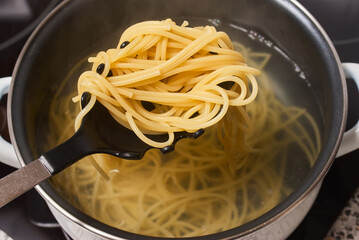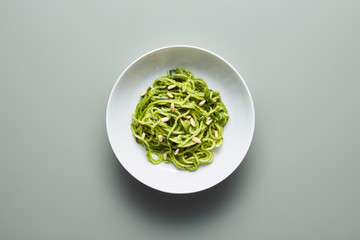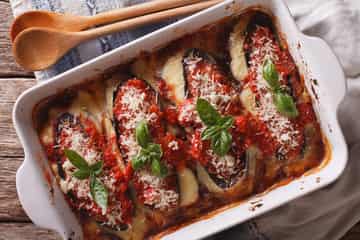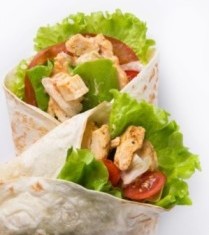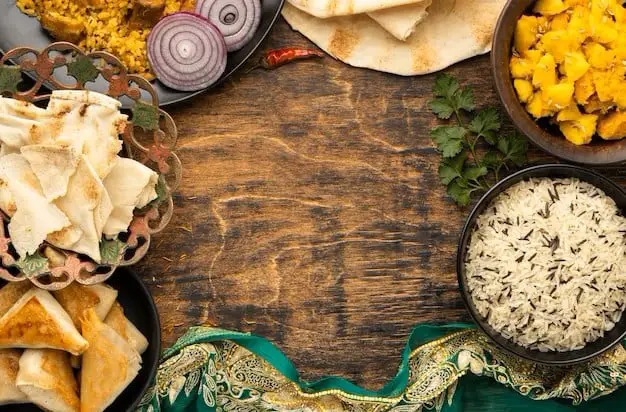Presto Pesto Pasta
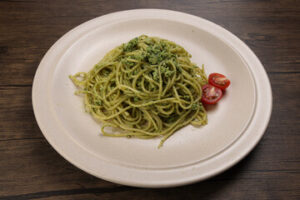
Hi there, food lovers ! I'm so excited to share Presto Pesto Pasta with you today—it's one of my favorite Italian dishes ever. When you need to put a delicious meal on the table quickly, this recipe is an absolute lifesaver. It's also really flavorful and delicious. Now let's get started and learn how to prepare this delicious green supper!
Type: Dinner
Cuisine: Italian
Preparation Time: 10 mins
Cooking Time: 15 mins
Total Time: 25 mins
Recipe Ingredients:
Hi there, food lovers ! I’m so excited to share Presto Pesto Pasta with you today—it’s one of my favorite Italian dishes ever. When you need to put a delicious meal on the table quickly, this recipe is an absolute lifesaver. It’s also really flavorful and delicious. Now let’s get started and learn how to prepare this delicious green supper!
Table of Contents
Why Presto Pesto Pasta?
Before we get our hands dirty (or should I say green?), let’s talk about why pesto pasta deserves a spot in your recipe collection. First off, it’s quick. I mean, really quick. We’re talking 20 minutes from start to finish, which is perfect for those busy weeknights when you’re tempted to just order takeout.
Secondly, it’s versatile. Pesto goes well with just about any type of pasta, and you can easily add in some protein or veggies to make it a complete meal. And let’s not forget that vibrant green color – it’s like springtime on a plate!
Lastly, homemade pesto just tastes better than store-bought. Don’t get me wrong, I’ve got nothing against the jarred stuff (it’s saved me more than once), but there’s something magical about making your own. The aroma of fresh basil, the nuttiness of the pine nuts, and the punch of garlic – it’s a sensory experience you don’t want to miss.
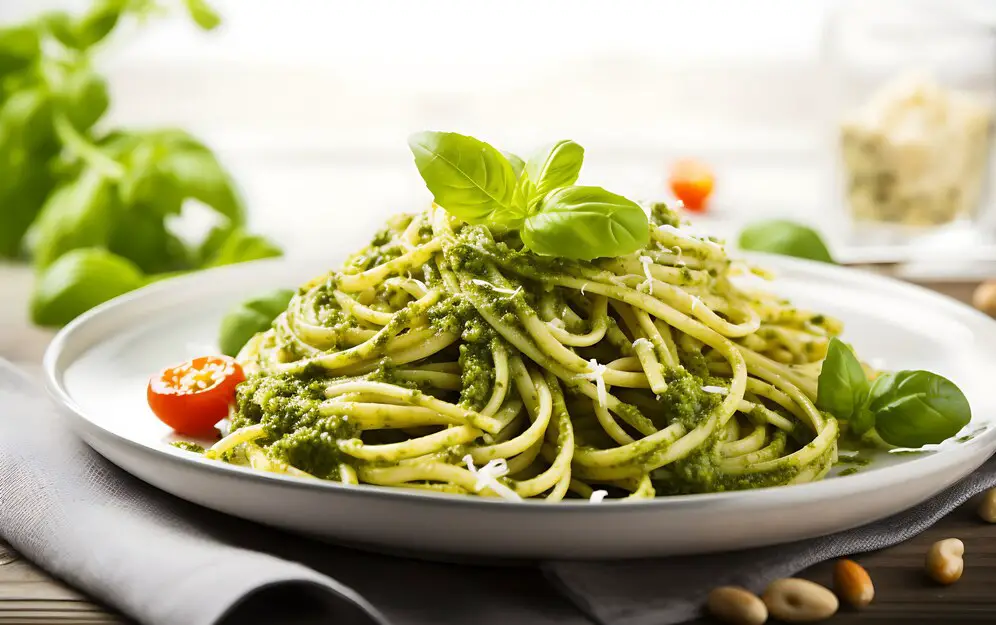
The Ingredients: Simple but Mighty
Okay, let’s get down to business. Here’s what you’ll need for our Presto Pesto Pasta (serves 4):
For the pesto:
– 2 cups fresh basil leaves (packed)
– 1/2 cup freshly grated Parmesan cheese
– 1/2 cup extra virgin olive oil
– 1/3 cup pine nuts
– 3 cloves garlic, minced
– Salt and freshly ground black pepper to taste
– A squeeze of lemon juice (trust me on this one)
For the pasta:
– 1 pound (16 ounces) of your favorite pasta (I’m a fan of fusilli, but spaghetti, penne, or even bow ties work great)
– Reserved pasta water (we’ll talk about this later)
– Extra Parmesan for serving (because who doesn’t love more cheese?)
Now, I know what some of you might be thinking: “Pine nuts? Aren’t those expensive?” And you’re right, they can be. If you’re watching your wallet, feel free to swap them out for walnuts or even sunflower seeds. The pesto police won’t come after you, I promise.
Let’s Make Some Pesto Magic
First things first, get a pot of water boiling for your pasta. Salt it generously – we want it to taste like the sea. This is your chance to season the pasta from the inside out.
While the water’s heating up, let’s focus on the star of the show: the pesto. Grab your food processor (or blender, if that’s what you’ve got) and toss in the basil leaves, pine nuts, and garlic. Give it a few pulses until everything is coarsely chopped.
Now, with the machine running, slowly drizzle in the olive oil. It’s like you’re making a tasty green smoothie, but trust me, this is way better. Keep processing until the mixture is smooth, scraping down the sides as needed.
Next, add the grated Parmesan, a pinch of salt, and a few grinds of black pepper. Pulse a few more times to combine. Then, give it a taste. This is where cooking gets personal. Too thick? Add a bit more olive oil. Need more salt? Go for it. And don’t forget that squeeze of lemon juice – it brightens up the flavors and keeps the pesto a vibrant green.
Pasta Party Time
By now, your water should be at a rolling boil. Drop in your pasta and cook according to the package instructions. But here’s a pro tip: aim for al dente. That means the pasta should still have a bit of bite to it. Nobody likes mushy noodles!
Before you drain the pasta, do me a favor and scoop out about a cup of the starchy pasta water. This liquid gold is going to help bring our dish together.
Drain the pasta and return it to the pot. Now, dollop on that gorgeous pesto you just made. Start with about 3/4 of it and toss everything together. If it seems a bit dry, add some of that reserved pasta water, a little at a time. The starch in the water will help the pesto cling to every nook and cranny of the pasta.
Keep tossing and adding pesto or pasta water until every strand is coated in that luscious green sauce. The heat from the pasta will warm up the pesto without cooking it, preserving all those fresh flavors.
Serve It Up!
Divide your Presto Pesto Pasta among bowls and sprinkle some extra Parmesan on top. A few cracks of black pepper wouldn’t hurt either. And there you have it – a simple, stunning meal ready in less time than it takes to decide what movie to watch.
But wait, there’s more! (I’ve always wanted to say that.) Let’s talk about how to make this dish your own.
Customization Station
One of the best things about pesto pasta is how easy it is to customize. Here are some ideas to get your creative juices flowing:
1. Protein Power: Grilled chicken, shrimp, or even some cannellini beans can turn this into a heartier meal.
2. Veggie Boost: Cherry tomatoes, sautéed zucchini, or steamed broccoli add color and nutrients.
3. Nutty Alternatives: No pine nuts? No problem. Try almonds, walnuts, or pistachios for a different twist.
4. Cheese Please: Parmesan is classic, but pecorino romano or even a mild goat cheese can be delightful.
5. Herbal Remedies: Basil is traditional, but don’t be afraid to mix in some mint, parsley, or even arugula for a peppery kick.
The Leftover Low-Down
Now, let’s address the elephant in the room: leftovers. Pesto pasta is one of those rare dishes that’s almost as good the next day. If you’ve got extra, store it in an airtight container in the fridge. When you’re ready to reheat, add a splash of water or olive oil to loosen things up, and warm it gently on the stove or in the microwave.
But here’s a fun idea: try your leftover pesto pasta cold! It makes for a surprisingly refreshing lunch, especially on a hot day. You can even toss it with some greens for a pesto pasta salad. How’s that for meal prep?
The Origins of Pesto: A Mini History Lesson
I don’t know about you, but I love knowing the story behind my food. So, let’s take a quick trip to Italy, specifically to the Liguria region in the northwest. This is the birthplace of pesto, where it’s been made for centuries.
The word “pesto” comes from the Italian word “pestare,” which means to pound or crush. Traditionally, pesto was made using a mortar and pestle (see the connection?), grinding the basil leaves, garlic, and pine nuts into a paste before adding the oil and cheese.
The ingredients in traditional Genovese pesto are simple but significant. Basil from Genoa, Italian pine nuts, garlic from Vessalico, coarse sea salt, Parmigiano-Reggiano and/or Pecorino cheese, and olive oil from the Italian Riviera. Each component brings its own character to the sauce.
While we might not always have access to these specific ingredients, the spirit of pesto remains the same: fresh, bold, and bursting with the flavors of its components. It’s a testament to how a few quality ingredients, treated simply, can create something truly extraordinary.
Pesto Beyond Pasta
I know we’ve been focusing on pasta (and for good reason – it’s delicious), but pesto is a culinary chameleon. Here are a few other ways you can use that green goodness:
1. Spread it on sandwiches instead of mayo.
2. Use it as a pizza sauce for a change from the usual red.
3. Stir a spoonful into your soup for an instant flavor upgrade.
4. Dollop it onto grilled vegetables or fish.
5. Mix it with a bit of yogurt or sour cream for a quick dip.
The possibilities are endless, really. Once you’ve got a batch of homemade pesto in your fridge, you’ll find yourself reaching for it at every meal.
Let’s Talk Nutrition
Now, I’m not a nutritionist, but I do believe in the power of balance. And pesto, my friends, has got some good things going for it. The basil is packed with vitamins A, K, and C, as well as antioxidants. Olive oil brings heart-healthy monounsaturated fats to the party. And let’s not forget about those pine nuts – they’re a good source of protein and minerals.
Of course, pesto is also calorie-dense, thanks to the oil and cheese. But you know what? That’s okay. It’s all about moderation and enjoyment. A little pesto goes a long way in flavoring your dish, so you don’t need to drown your pasta in it (though I won’t judge if you do).
The key is to pair your pesto pasta with other wholesome ingredients. A side salad, some grilled vegetables, or even just a handful of cherry tomatoes can round out the meal nicely.
I’ll create a chart with the estimated nutrition values for the Presto Pesto Pasta recipe. Please note that these values are approximate and can vary based on specific ingredients and brands used. This chart is for one serving, assuming the recipe serves 4 people.
| Nutrient | Amount per Serving |
|---|---|
| Calories | 650-700 kcal |
| Total Fat | 35-40 g |
| – Saturated Fat | 7-8 g |
| – Monounsaturated Fat | 20-22 g |
| – Polyunsaturated Fat | 5-6 g |
| Cholesterol | 10-15 mg |
| Sodium | 300-350 mg |
| Total Carbohydrates | 70-75 g |
| – Dietary Fiber | 3-4 g |
| – Sugars | 2-3 g |
| Protein | 15-18 g |
| Vitamin A | 10-15% DV* |
| Vitamin C | 5-10% DV |
| Calcium | 15-20% DV |
| Iron | 10-15% DV |
| Vitamin K | 30-40% DV |
| Vitamin E | 15-20% DV |
*DV = Daily Value based on a 2,000 calorie diet
Additional Notes:
- The high calorie and fat content comes primarily from the olive oil and pine nuts in the pesto, as well as the pasta. These are mostly heart-healthy monounsaturated and polyunsaturated fats.
- The carbohydrate content is mainly from the pasta. Choosing whole wheat pasta can increase the fiber content.
- Protein comes from the pasta, cheese, and pine nuts.
- This dish is particularly high in Vitamin K due to the basil leaves.
- The sodium content can vary significantly based on how much salt is added to the pasta water and the pesto. The estimate here assumes moderate salting.
- Adding vegetables to the dish can increase fiber, vitamin, and mineral content while potentially reducing the calorie density per serving.
- This chart does not account for any additional Parmesan cheese sprinkled on top before serving, which would increase the calorie, fat, protein, and calcium content.
Remember, while pesto pasta is delicious, it’s also calorie-dense. Pairing it with a large salad or plenty of vegetables can help balance the meal. As always, moderation is key!
Pesto Pasta: A Dish for All Seasons
One of the beautiful things about pesto pasta is its year-round appeal. In the summer, when basil is abundant, making pesto is a great way to use up your garden harvest. The fresh, cooling flavors are perfect for a warm evening.
But don’t discount this dish in the cooler months. The rich, garlicky sauce can be incredibly comforting on a chilly night. And if fresh basil is hard to come by, you can experiment with other greens like kale or spinach. They’ll give you a different flavor profile, but it’ll be delicious nonetheless.
Final Thoughts: The Joy of Cooking
As we wrap up our pesto pasta journey, I want to take a moment to reflect on why cooking meals like this can be so rewarding. In our fast-paced world, it’s easy to see cooking as just another chore on the to-do list. But I invite you to look at it differently.
Making pesto from scratch, boiling the pasta to just the right doneness, and bringing it all together into a harmonious dish – it’s more than just preparing food. It’s an act of creativity, of care, and dare I say, of love. Whether you’re cooking for yourself, your family, or a group of friends, you’re nourishing both body and soul.
So the next time you whip up this Presto Pesto Pasta, take a moment to appreciate the process. Inhale the aroma of the basil as you blend it. Listen to the sizzle of the pasta as it hits the pesto. And when you take that first bite, savor it. Really taste it.
Because at the end of the day, that’s what good food is all about – not just filling our stomachs, but feeding our senses and creating memories. And if you ask me, this humble pesto pasta does just that.
So, my fellow food enthusiasts, I hope this post has inspired you to don your aprons, fire up your food processors, and embark on your own pesto pasta adventure. Remember, cooking is as much about the journey as it is about the destination. And with this recipe in your arsenal, I guarantee the destination will be delicious.
Until next time, keep it green, keep it tasty, and most importantly, keep cooking!
2. Don’t heat the pesto:
– Pesto is best when it’s not cooked. The heat from the pasta will warm it up just enough.
– Heating pesto can cause the basil to turn brown and the flavors to dull.
3. Toast your pine nuts:
– Before adding pine nuts to the pesto, lightly toast them in a dry skillet over medium heat until fragrant. This enhances their flavor.
– Watch them closely and stir frequently, as they can burn quickly.
5. Pasta water is your friend:
– Save more pasta water than you think you’ll need. It’s easier to not use it all than to wish you had more.
– The starchy water helps the sauce cling to the pasta and adjusts the consistency without diluting the flavor.
6. Choose the right pasta:
– Opt for pasta shapes with nooks and crannies that can hold the pesto, like fusilli, rotini, or farfalle.
– If using long pasta like spaghetti or linguine, consider slightly undercooking it and finishing it in a pan with the pesto and some pasta water to help the sauce adhere better.
7. Blanch the basil (optional):
– If you want to maintain a vivid green color, especially if not serving immediately, try blanching the basil leaves.
– Dip the leaves in boiling water for 5-10 seconds, then immediately transfer to ice water. Dry thoroughly before using.
8. Add lemon juice at the end:
– A small squeeze of lemon juice adds brightness and helps preserve the green color.
– Add it just before serving for the best effect.
9. Cheese considerations:
– Grate the Parmesan cheese finely so it blends well into the pesto.
– For the most authentic taste, use Parmigiano-Reggiano. If you can find it, a mix of Parmigiano-Reggiano and Pecorino Romano (a sheep’s milk cheese) is traditional in Genoa.
10. Pesto consistency:
– Aim for a thick, creamy consistency. If it’s too thick, add a bit more olive oil or pasta water. If too thin, add more cheese or nuts.
11. Storage tips:
– If not using the pesto immediately, store it in an airtight container with a thin layer of olive oil on top to prevent oxidation (browning).
– Pesto can be frozen for later use. Consider freezing it in ice cube trays for easy portioning.
12. Room temperature ingredients:
– Try to have your pesto ingredients at room temperature. Cold ingredients directly from the fridge can make the olive oil seize up, leading to a less smooth sauce.
13. Don’t forget to season:
– Taste your pesto before adding it to the pasta. Adjust salt and pepper as needed.
– Remember, the pasta water and cheese also add saltiness, so be cautious not to over-salt.
14. Serving temperature:
– Pesto pasta is excellent served warm, at room temperature, or even chilled. Don’t worry if it cools down a bit before serving.
15. Garnish creatively:
– Save a few whole basil leaves for garnish.
– A light sprinkle of toasted pine nuts on top can add a nice textural contrast.
Remember, cooking is part science, part art. These tips are guidelines, but don’t be afraid to experiment and adjust according to your taste preferences. The most important tip? Enjoy the process and the delicious result!
Presto Pesto Pasta

Hi there, food lovers ! I'm so excited to share Presto Pesto Pasta with you today—it's one of my favorite Italian dishes ever. When you need to put a delicious meal on the table quickly, this recipe is an absolute lifesaver. It's also really flavorful and delicious. Now let's get started and learn how to prepare this delicious green supper!
Type: Dinner
Cuisine: Italian
Preparation Time: 10 mins
Cooking Time: 15 mins
Total Time: 25 mins
Recipe Ingredients:
Presto Pesto Pasta
Presto Pesto Pasta is a quick and tasty dish that brings big flavor to your table in just 20 minutes. It's all about the bright green pesto sauce made from fresh basil leaves, pine nuts, garlic, olive oil, and Parmesan cheese.
The pesto is super easy to make - just blend everything together! It's not cooked, so it keeps that fresh basil taste. A squeeze of lemon juice makes all the flavors pop.
This sauce gets tossed with hot pasta right after cooking. The heat from the pasta warms up the pesto just enough, and some pasta water helps it coat every bit of pasta. Whether you use twisty, curly, or long noodles, each bite is full of herby, garlicky goodness.
What's great about this recipe is that it works for any day of the week. It's fast enough for a weeknight dinner but also nice enough for having friends over. Plus, you can easily add things like chicken, shrimp, or veggies to make it your own.
The final dish is colorful, smells amazing, and tastes like summer in a bowl. It's rich but not heavy, and the sprinkle of extra Parmesan on top makes it even better.
Presto Pesto Pasta shows that you don't need fancy ingredients or lots of time to make something delicious. It's simple food done right - fast, fresh, and full of flavor!

list of ingredients
For the pesto:
For the pasta:
Instructions
recipe details
-
pasta cooking
- Bring a large pot of salted water to a boil. Cook the pasta according to package instructions until al dente. Reserve 1 cup of pasta water before draining.
-
pesto making
- While the pasta is cooking, make the pesto. In a food processor, combine the basil leaves, pine nuts, and garlic. Pulse several times until coarsely chopped.
- With the processor running, slowly pour the olive oil through the feed tube in a steady stream. Process until smooth, stopping to scrape down the sides as needed.
- Add the grated Parmesan cheese, a pinch of salt, and a few grinds of black pepper. Pulse a few more times until combined.
- Taste the pesto and adjust seasoning if needed. Stir in the lemon juice.
-
serve
- Once the pasta is cooked and drained, return it to the pot. Add about 3/4 of the pesto to the pasta and toss well to coat. If the sauce is too thick, add some of the reserved pasta water, a little at a time, until you reach your desired consistency.
- Serve the pasta in individual bowls. Top each serving with a dollop of the remaining pesto and a sprinkle of extra Parmesan cheese.
- Finish with a few grinds of black pepper and serve immediately.
If you have time, lightly toast the pine nuts in a dry skillet before adding them to the pesto. This enhances their flavor. The pesto recipe usually makes more than you need for the pasta. Store leftover pesto in an airtight container in the refrigerator with a thin layer of olive oil on top to prevent browning. Use within 2-3 days. For a variation, try adding halved cherry tomatoes, grilled chicken, or sautéed shrimp to the pasta. This dish can be enjoyed warm, at room temperature, or even cold as a pasta salad. Enjoy your homemade Presto Pesto Pasta!


